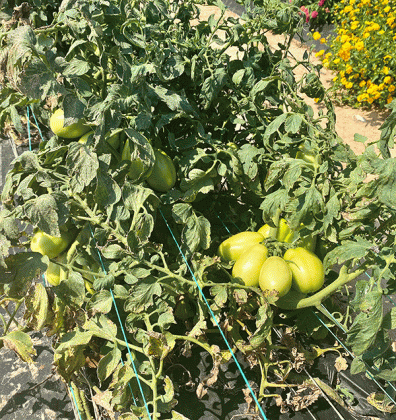
Heather Kirk-Ballard / LSU AgCenter horticulturist
Summer can be a challenging time for gardeners, especially when it comes to the excessive heat and high humidity. This is great for tropical plants — but a plethora of plant pathogens, including fungi, thrive in these conditions too. Add in lack of rain or an excess of rain, and you’ve got your work cut out for you.
There is a growing trend in vegetable gardening among homeowners these days. Particularly during and following the pandemic, we saw an increase in home vegetable gardening in the United States, and homeowners have continued to grow vegetables at home.
When challenges arise, it can be frustrating, and you may be tempted to admit defeat. Over and over on social media, in emails and phone calls to the LSU AgCenter, we keep hearing about people not being successful in the vegetable garden.
Vegetable specialist Kiki Fontenot wants readers to know that you can succeed in the vegetable garden, even in the sweltering heat of the summer.
“Success in the garden, like success in everything in life, comes with a little grit, hard work and the ability to see problems and not run away,” she told me.
Below are a few tips from Kiki for a couple of common summer vegetable problems. These tips will not solve all your problems, but they are a start.
Problem No. 1: “My plants are small. They are barely growing, and I do not make very much produce.”
Have you applied fertilizer? Vegetable plants are heavy feeders. According to Kiki, “nine times out of 10, the gardener did not incorporate any fertilizer into the soil or not enough.” Start with a 13-13-13 broadcast into the soil before planting your seeds or seedlings.
Use a medium rate of fertilizer — as an example, 5 to 6 pounds, or 10 to 12 cups, of 13-13-13- per 300 square feet. If your garden is only 100 square feet, then you would use 2 pounds or 4 cups of 13-13-13. If you have something like a 4-feet-by-8-feet raised bed, that is 32 square feet. You should apply about 1 pound (actually 0.62 pounds, but round up and make it easy), which would be 2 cups of 13-13-13 before planting.
Keep in mind that you need to fertilize again when your summer plants begin to bloom. Fontenot recommends 1 tablespoon of calcium nitrate (which is 15% nitrogen) between every other plant applied every other week through harvest. You also can use a basic water-soluble fertilizer. Those are usually 15% N as well, and you would apply 1 tablespoon per gallon of water, drenching your plants every other week through harvest. This extra bump of nitrogen really increases plant growth and yields.
On to Problem No. 2: “That squash vine borer comes every year, and my vines are just wilting. It’s in my pumpkins, squash, zucchini, etc.”
Once these moths find your garden, you can bet they will deposit eggs, and immature insects will burrow into the stems and cause problems. Start by covering your cucurbit plants with insect netting. The netting lets in light, keeps adult moths off your plants. Remove the netting after flowers begin to open.
Scout your plants three to four times a week. As soon as you see the holes, be prepared to mix up an insecticide with the active ingredient bifenthrin. Mix it according to the manufacturer’s label. Spray the solution right where you see the small hole with “sawdust” coming out of it. That should kill the larvae.
Do you not want to use insecticides? You can use a precision knife; a common brand name is X-Acto. Cut a 1-inch slit parallel with the vine above and below the little hole with sawdust coming out of it. Hand remove the larvae and wrap the vine back together with a small rubber band just tight enough to keep it together. Do not “choke” the plant.
Summer vegetable gardens can be a worthy challenge. If you are experiencing issues in the garden, don’t give up. Reach out to your local LSU AgCenter agent and visit www.LSUAgCenter.com for all your gardening needs.
